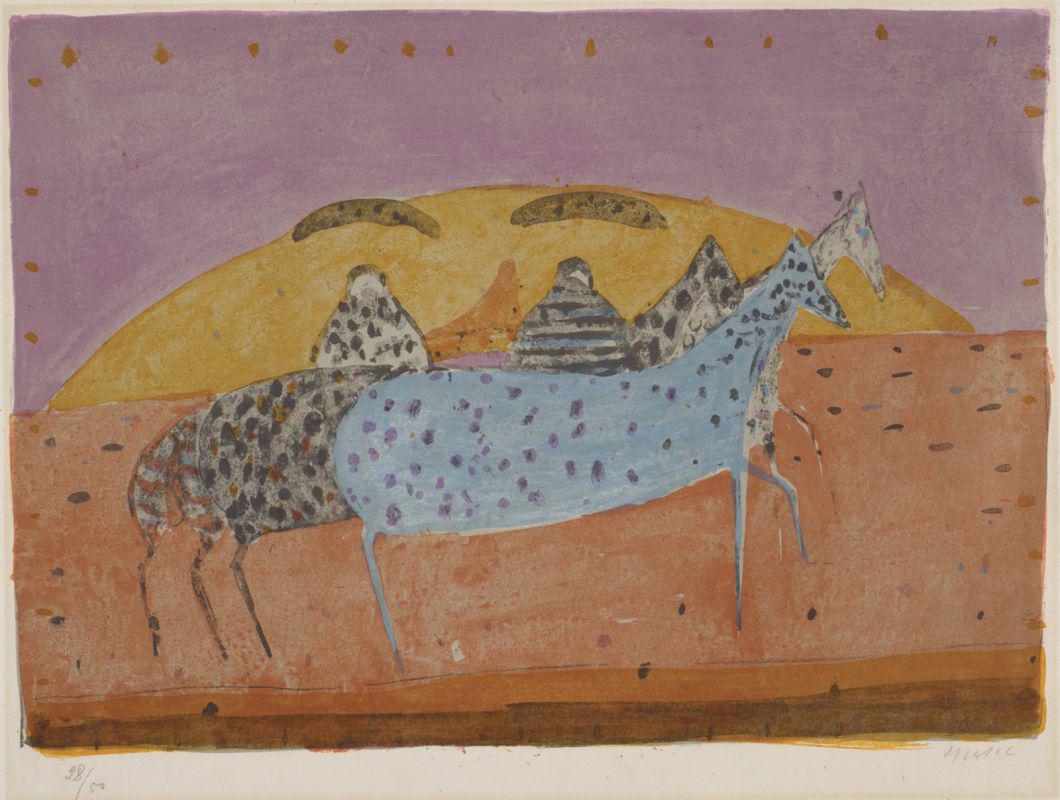
The exhibition will mostly display works from an art collection owned by Ljuban, Milada and Vanda Mušič, which covers nearly the entire length of Mušič's creative life, starting in 1935 – soon after the artist decide to study at the Zagreb art academy – and ending in 1999, when Mušič created his last series. 62 selected works will be put on display.
According to the project's leader, Mateja Krapež, the curators tried to present the works both chronologically and thematically, also because Murič pained series with repeating motifs in certain periods. "He created these series using various techniques. For example, he would develop the motifs by drawing on the paper first, then he would transition to oil paintings and take up graphic design in between. He was a truly versatile artist," Krapež emphasizes. Another characteristic of Mušič's opus is his attempts to achieve as big of an effect as possible with minimal painting strategies.
At the entrance to the exhibition, its visitors will be greeted by the artist's auto portrait and an auto portrait of this wife, Ida Mušič Cadorin. The works were purchased by the National Gallery at an auction in Trieste in December 2015. A work called Tihožitje (Still Life), depicting seafood, will be placed next to them to highlight that Mušič painted certain motifs throughout his life.
The National Gallery obtained 144 works from the Mušič family art collection, including 29 oil and acrylic paintings, 81 graphics, one tapestry, and 40 works created in various techniques of paper drawings. The family of Mušič's brother donated 56 works to the gallery, while another family lent them.
Due to greater sensitivity, works on paper will be put on display only for six months. The first substitution will thus be carried out in November, when almost half of the exhibition will be replaced.
Besides the National Gallery, Mušič's work is well represented in the Modern Gallery, the Maribor Art Gallery and the Kambič Collection in Metlika. Dobrovo also boasts a permanent collection of graphical work, donated to the museum by the author himself.
Mušič's works are also included in art collections of most major 20th century museums such as Tate Modern, Centre Pompidou National Museum of Modern Art and Kunstmuseum Basel as well as numerous comprehensive exhibitions of European art.
The National Gallery will open the Mušič exhibition on 18 May. On the following day, the gallery will host a lecture by one of the greatest experts on Mušič's art and a member of the French Academy, Jean Clair.
N. Ar., MMC; translated by K. Z.


































































